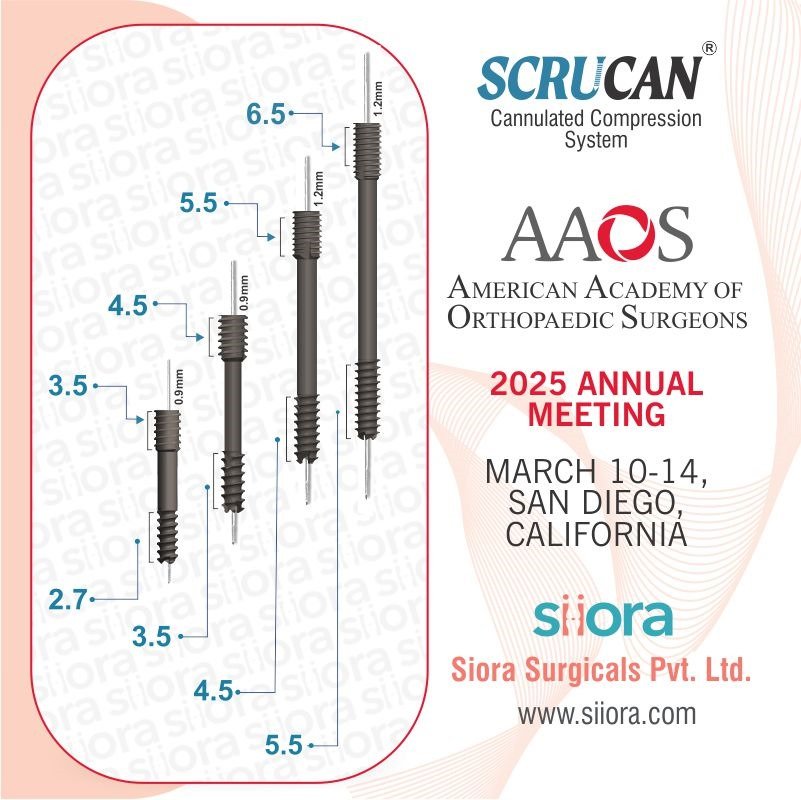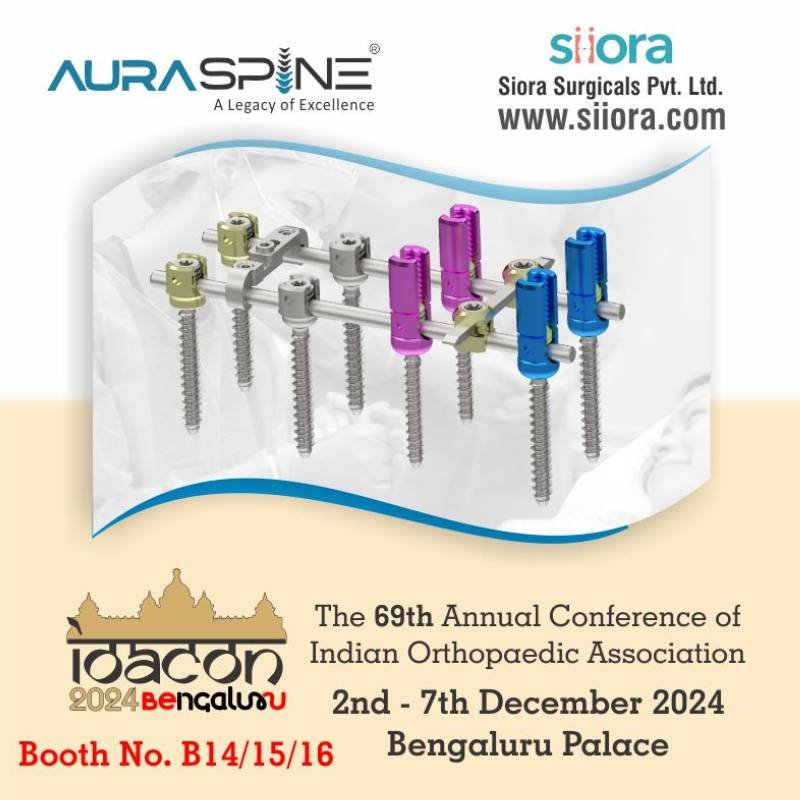Cannulated screws have become one of the mainstays in the orthopedic surgeon’s toolbox for treating a wide range of bone fractures, fusions, and osteotomies. They are known for having a unique design when compared to traditional screws and this design offers several advantages over them. In several cases, orthopedic cannulated screws have become a popular choice for achieving optimal bone healing and patient outcomes. However, the right application and correct placement of these screws is paramount to achieve optimum results.
In this post, we will have a detailed look at these screws and see what makes them different.
Understanding the Design: What Makes Orthopedic Cannulated Screws Special?
The key feature of a cannulated screw is its hollow core, running down the center of its shaft. This central channel, unlike solid screws, allows for the passage of a guidewire during insertion. This guidewire plays a crucial role in:
Improved Accuracy
The guidewire, significantly thinner than the screw itself, can be precisely positioned under fluoroscopy (real-time X-ray imaging) to ensure proper alignment of the bone fragments. This minimizes the need for extensive drilling and reduces the risk of damaging surrounding tissues.
Minimally Invasive Techniques
The smaller diameter of the guidewire allows for smaller incisions, leading to a less invasive surgical approach. This leads to faster healing times, reduced pain, and improved cosmetic outcomes for patients.
Multiple Adjustments
If the initial placement isn’t perfect, the surgeon can easily remove the guidewire and reinsert for fine-tuning the position before final screw insertion. This flexibility minimizes the risk of misplacement and the need for additional surgery.
What Are the Different Types of Orthopedic Cannulated Screws?
Cannulated screws come in various configurations depending on different bone types and fracture patterns. Here are the common types of cannulated screws available in orthopedic surgeon’s arsenal:
Cortical Screws
Designed for denser outer bone (cortex). These screws are typically fully threaded along their shaft. They can be used as lag screws, where the screw compresses the fracture fragments for better healing.
Cancellous Screws
Cancellous screws are intended for softer, spongy bone (cancellous bone), these screws have partial threads. This allows for better purchase within the bone. They are commonly used in fractures involving the ends of long bones (metaphyseal fractures).
What Are the Applications of Orthopedic Cannulated Screws?
The versatility of cannulated screws makes them suitable for a broad spectrum of orthopedic procedures. Here are some common applications:
Fracture Repair
Cannulated screws are a preferred choice for fixing fractures in various bones, including the hand, wrist, foot, ankle, tibia, fibula, humerus, femur, and pelvis. Their ability to achieve precise alignment and compression is crucial for proper bone healing.
Fusions
These screws play a vital role in fusing bones together, such as in spinal fusions for treating spinal instability or deformity. The cannulated design allows for accurate placement across the joint, promoting successful bone union.
Osteotomies
Cannulated screws can be used to secure bone fragments after a surgical cut (osteotomy) which is performed for the realignment or lengthening procedures in the limbs.
What Are the Benefits of Using Orthopedic Cannulated Screws?
Beyond the inherent advantages of their design, cannulated screws offer several benefits for both surgeons and patients:
Improved Accuracy
The use of a guidewire enhances the precision of screw placement, leading to better bone healing and reducing the risk of complications. Moreover, these screws allow replacement without any further damage to tissues if the first placement is incorrect.
Minimally Invasive Surgery
Smaller incisions translate to faster recovery times, less pain, and improved cosmetic outcomes. Hence, these screws are compatible with both traditional arthroscopic surgical procedures.
Reduced Bone Damage
The smaller diameter of the guidewire minimizes the amount of drilling required, preserving healthy bone tissue. As a result, quicker bone healing occurs.
Versatility
Cannulated screws come in various sizes and thread configurations to accommodate different bone types and fracture patterns. Besides this, they are also available in stainless steel and titanium-made structures.
Durability
These screws are typically made from strong biocompatible materials like titanium alloys, ensuring long-term stability of the repair.
What Are the Limitations of Orthopedic Cannulated Screws?
While cannulated screws offer numerous benefits, they also have some limitations to consider:
Cost
These screws tend to be more expensive than traditional screws due to their complex design and manufacturing process. However, their benefits in several cases can overshadow their cost.
Technical Expertise
Their insertion requires a certain level of surgical skill and experience for optimal results. Hence, experienced orthopedic surgeons must be chosen depending on the type of injury and location.
Not Suitable for All Fractures
For some fractures, particularly those involving comminuted bone (shattered bone), cannulated screws may not provide adequate stability, and other fixation methods might be preferred.
Conclusion
Cannulated screws have revolutionized bone fixation techniques in orthopedic surgery. Their innovative design offers improved accuracy, minimally invasive surgery, and versatility, leading to better patient outcomes. However, it’s important to consider their limitations and suitability for specific fracture patterns. As technology and surgical techniques continue to evolve, cannulated screws are likely to remain a valuable tool in the orthopedic surgeon’s arsenal for promoting proper bone healing.
About The Company
Siora Surgicals Pvt. Ltd. is among the world leaders when it comes to manufacturing and supplying a CE-certified range of trauma implants and instruments. Serving global distributors and orthopedic surgeons for over 30 years, the company has established a strong position in the global orthopedic markets. Moreover, Siora has received several national and international certifications including ISO and CE.
The quality and extensive range of orthopedic implants by Siora have made it a trustworthy brand worldwide. The company has an in-house production facility in India and it is equipped with advanced machines sourced from the best in the business. All the implants are fabricated using medical-grade stainless and titanium. The company has also established an ISO class 10,000 cleanroom for product packaging and a microbiology lab to check the bioburden on products. Siora always keeps looking to expand its market reach. It has currently shifted its focus to finding Orthopedic Distributors in USA and supply an international standard range of implants in the country.







